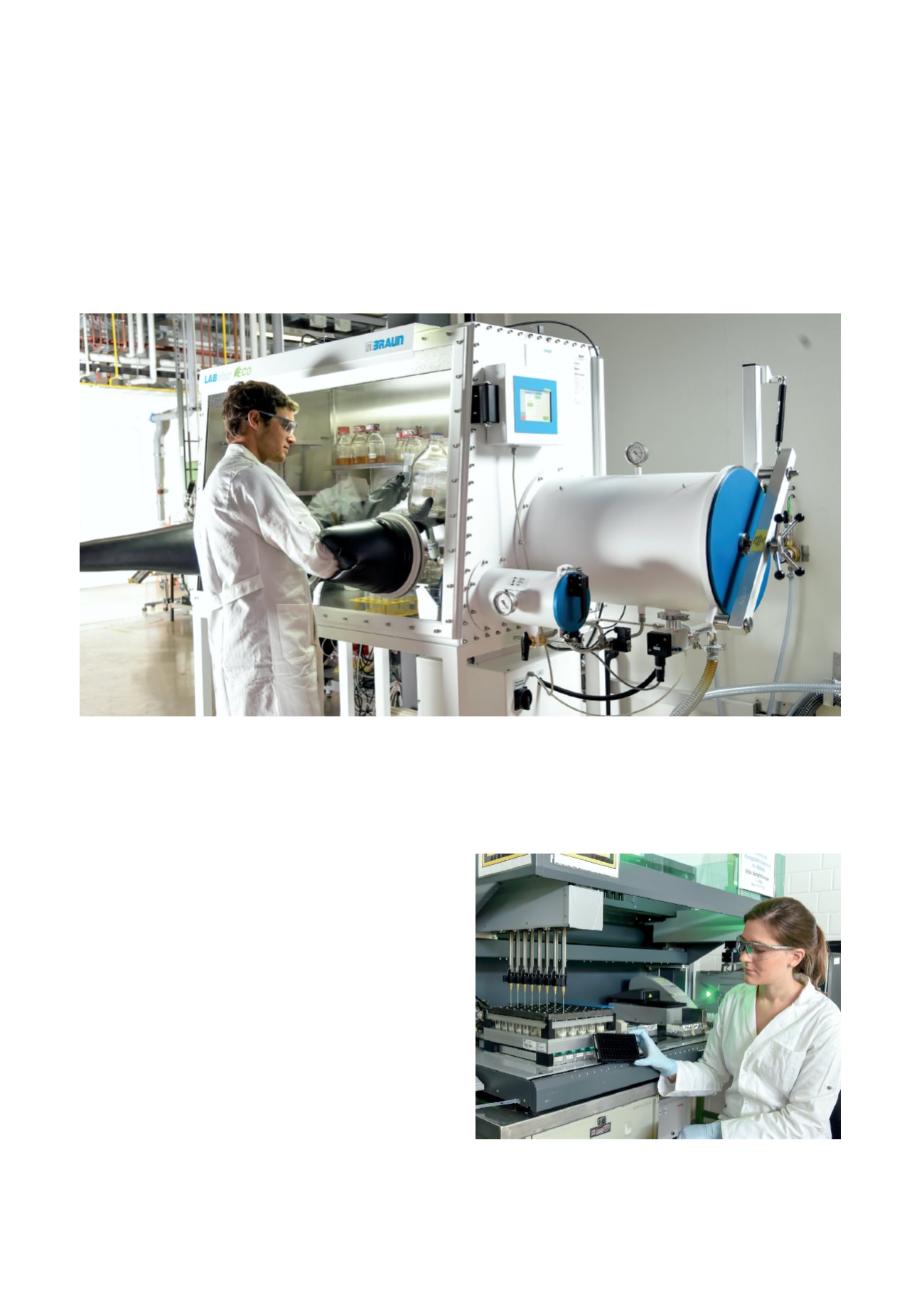

280
Biochemical Engineering
Industrial biotechnology
n
Industrial biotechnology (‘white biotechnology’) makes use of microorganisms or enzymes for the
industrial production of chemicals like special and fine chemicals, building blocks for agricultural or
pharmaceutical products, additives for manufacturing as well as bulk chemicals and fuels. Renew-
able resources and CO
2
are the favored raw materials for industrial biotechnology. The Institute of
Biochemical Engineering deals with all aspects of the technical use of biochemical reactions for
industrial biotechnology. The research focus is on bioreactors and biocatalysis, as well as on (gas-)
fermentation and isolation of bioproducts.
Special microorganisms are able to produce chemicals with carbon dioxide as sole carbon source, but oxygen (air) is toxic to them. At the Institute of
Biochemical Engineering these microorganisms are prepared in anaerobic (oxygen free) workbenches for reaction engineering studies in bioreactors.
(photo: Tobias Hase, TUM)
Bioreactors
The effective generation of process information represents
a major bottleneck in microbial production process devel-
opment and optimization. An approach to overcome the
necessity of a large number of time- and labor-consuming
experiments in lab-scale bioreactors is miniaturization and
parallelization of stirred-tank reactors along with automa-
tion and digitalization.
Highlight
A new miniaturized laser-based sensor system has been
established for parallel online measurement of optical den-
sities as reference for microbial cell mass concentrations
in 48 individual single-use stirred-tank bioreactors which
are operated in a bioreactor unit on a shoe-box scale and
automated with a lab robot.
Projects
■■
Multi-parameter analytics in parallel bioreactors
Operation of a bioreactor unit with 48 parallel single-use stirred-tank
bioreactors on a milliliter-scale (photo: Tobias Hase, TUM)



















